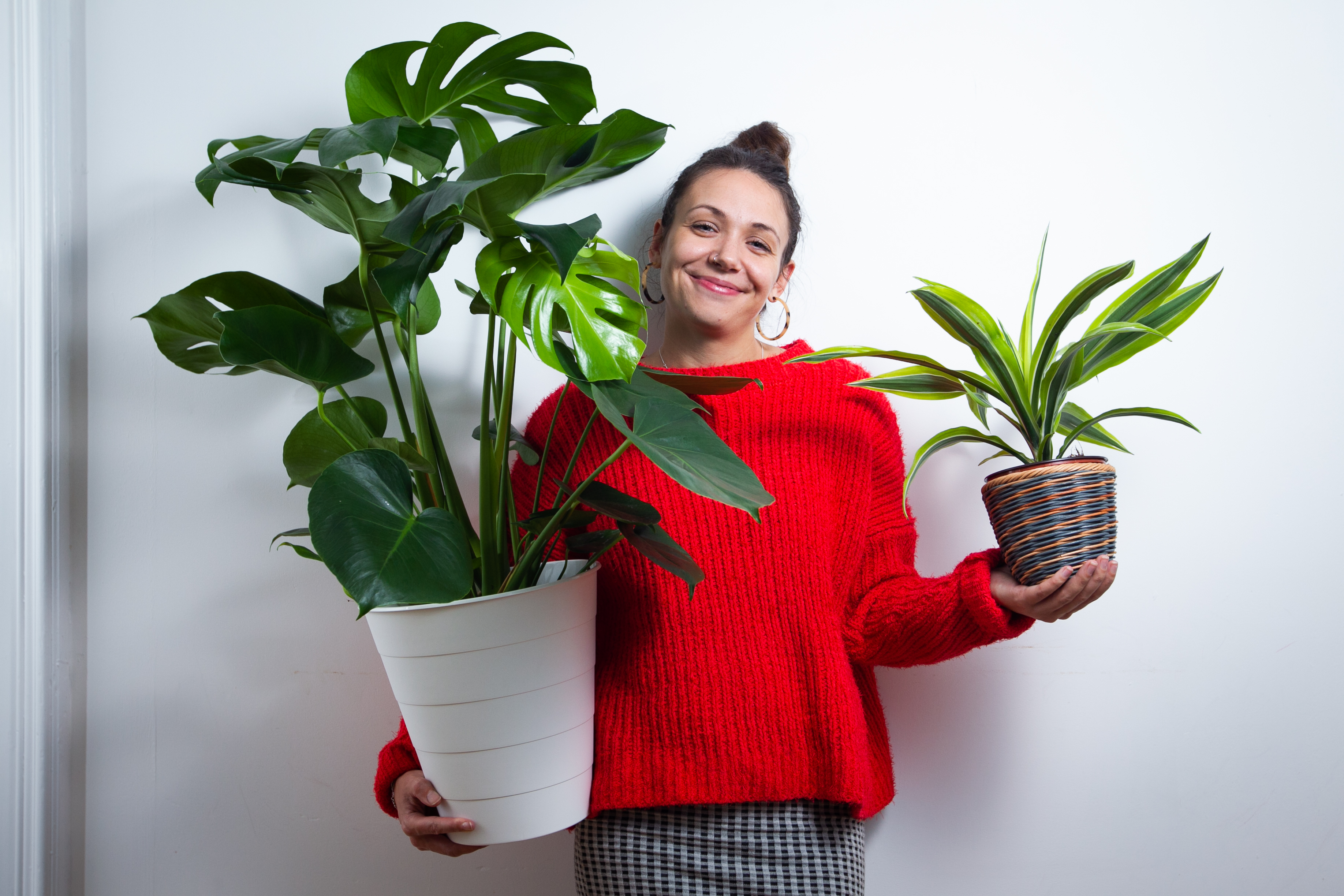
POSTING pictures of potted perfection online has helped fuel a surge in the popularity of houseplants.
Experts report a hike in the number of 20-somethings getting green fingers indoors.
After a decade of slumping sales, the number of houseplants sold among the 18-34 age group is growing, according to research.
And indoor foliage is the latest trend to grip social media as hundreds of thousands of Instagram followers flock to popular personalities known as plant influencers — or plantfluencers.
Accounts share pictures of their fiddle leaf fig trees and cheese plants, two of the most fashionable florae on the social networking sites.
Thousands of Instagrammers post pictures of their own plants with hashtags such as #monsteramondays and #crazyplantlady.
In only two years, House Plant Club, an account dedicated to interior shrubbery has gathered 450,000 green-fingered followers looking for plant-spiration for their homes.
Paul Thomas is owner of House of Plants, an internet shop focusing on houseplants.
He’s witnessed the huge growth in popularity of plants which had fallen out of favour with middle-aged buyers.
“Houseplants were pushed aside by the garden centres and interior designers as they weren’t considered trendy any longer, and it was down to fashion,” said Paul. “But now our customer is changing from a middle-aged person to a much younger one.
“In the 70s and 80s you used to get the cheese plant, spider plant and mother-in-law’s tongue – these were favourites but they fell away.
“In the 80s, things like spider plants were so popular. There were four television programmes running at one time which were focused exclusively on houseplants.
“This was because people wanted a more minimalist style in their homes. But now it’s more trendy to be retro instead of minimalist, so plants are coming back.
“Social networking is the reason for the recent craze for houseplants.
“It started off with designer blogs then it moved to Facebook and then Instagram accounts, which began to feature houseplants.”
Among the popular trends at the moment are plants with a trailing or large leaf.
“Take ficus lyrata, or fiddle-leaf fig – I’ve spent 30 years in horticulture and I’ve never known a plant to be popular like this,” said Paul.
“Now there’s a massive resurgence in the pilea peperomioides, known as Chinese money plant. Primarily because it’s easy to grow.”
Younger people finding it difficult to buy their own home who are stuck in flats without gardens are partially driving the trend, according to Paul.
“We call them the Green Generation,” he added. “Younger people care about ‘greening’ their living space, as well as living things and their environment, so you can see why they want to surround themselves with houseplants.
“We’re finding that younger buyers are very interested in growing the plant and caring for them, rather than just having them as an ornament. They want to care for and raise them.
“There’s a good UK tradition of personifying your plants, and doing things like naming them and talking to them. It becomes like a pet, rather than an ornament you replace.”
However just like other forms of pet, there is a downside, according to Paul.
“A lot of plants retailers name their plants like IKEA, but I think that just dumbs down houseplants,” he added. “If you’re getting into a plant, get into it and look after it properly.
“There are lots of plants that look fantastic on Instagram but are very difficult to look after. Take the alocasia plant, or elephant ear.
“It looks great but they’re a nightmare. They’re being sold by retailers as a cool plant but they’re hard to care for.
“There’s a parallel with certain pedigree dog breeds in that they may look good on your social media account but they’re a big responsibility.
“So although we want people to buy them and this trend is very positive, I’d like to remind people that a plant isn’t just for Christmas.”
Megan’s story:
Growing up, my house was always full of plants and flowers.
My mum was really into flower arranging and our garden was her and my dad’s pride and joy. I grew up on the Isle of Arran and lived in front of a wood, so when I moved to Glasgow, I guess it felt a bit weird not to be surrounded by plants and nature.
I always had some small plants dotted about but more recently, my love for greenery has grown.
I think it’s a lot to do with the aesthetic of them and being frequently exposed to really lovely ways to decorate with them on social media platforms like Instagram or Pinterest. For me they immediately make a room look quirkier and their difference in sizes and shapes really appeals to me. I’m not one for starkness. I really like the cluttered, higgelty-piggelty look, which is what a lot of plants can bring to a room.
There’s also an element of calm that foliage can add to a space, and the therapeutic nature of tending to them and watering them is something I really enjoy.
On a more scientific front, they’re also a natural air purifier, and can really help with making your home feel clean and airy and full of oxygen.
However, I do think I need to start refraining from buying any more before our living room starts feeling less like a lounge and more like the Botanic Gardens.

Enjoy the convenience of having The Sunday Post delivered as a digital ePaper straight to your smartphone, tablet or computer.
Subscribe for only £5.49 a month and enjoy all the benefits of the printed paper as a digital replica.
Subscribe